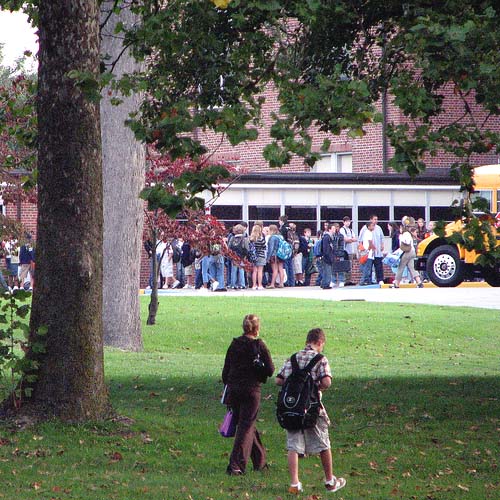Schools

The location and quality of schools have far reaching implications for students, families, communities, local governments and taxpayers, and school locations are intricately tied to land use. Schools influence where people choose to live; how students, parents, staff and other community members get to the school; and how connected people feel to their neighbors and communities. Schools can serve as focal points for communities by encouraging shared uses, preservation of community identity and landmarks, and promoting healthy, walkable neighborhoods. School locations impact local governments' capital budgets when they require new or upgraded infrastructure, and they place varying demands on annual operating expenses, as transportation costs increase with greater reliance on school buses. Schools that lend themselves to shared uses such as recreation centers, adult education programs and senior activities can also help a local government use its financial resources efficiently.
Schools represent a long term capital investment in our communities, yet the population of school age children fluctuates. The state and local jurisdictions need to be cognizant of these things, and of evolving educational needs and priorities, as they plan to open, close, renovate or expand school buildings.
School funding is the state's second largest capital program. The Maryland Department of Planning is a member of the Interagency Committee for School Construction ("IAC"), which develops recommendations for over $300 million in state school construction funds annually. As a steward of state funding, the IAC must justify every project, a responsibility made more acute because demand far exceeds funding. The IAC must deploy the funds as responsibly as possible, which requires a deep, interdisciplinary understanding of development patterns, community and educational perspectives, fiscal constraints and construction standards.
 In addition to the Maryland Department of Planning, the Maryland State Department of Education and the Maryland Department of General Services sit on the IAC; each agency performs critical functions related to school construction. Together, they form a unique interagency collaboration that ensures mutual consideration and a thorough appreciation of their fellow agencies' respective goals: to best serve both students and communities within state fiscal constraints and consistent with state construction and procurement practice.
In addition to the Maryland Department of Planning, the Maryland State Department of Education and the Maryland Department of General Services sit on the IAC; each agency performs critical functions related to school construction. Together, they form a unique interagency collaboration that ensures mutual consideration and a thorough appreciation of their fellow agencies' respective goals: to best serve both students and communities within state fiscal constraints and consistent with state construction and procurement practice.
This interrelated set of policies links school construction growth to sound land use patterns, community revitalization and sustainable development goals. As noted above, schools serve as community focal points by promoting shared uses, preservation of community identity and landmarks, and promoting healthy, walkable communities. Therefore, as much as possible, the Maryland Department of Planning aims to advance policies that encourage local jurisdictions to construct and rehabilitate neighborhood schools.